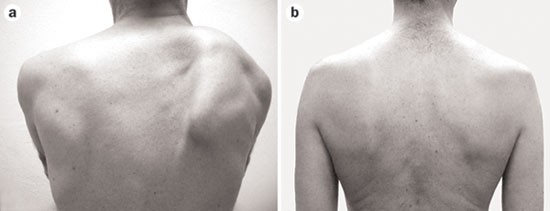The Importance of Early Intervention in Neuralgia Amyotrophy Physiotherapy Treatment

What is Neuralgia Amyotrophy?
Neuralgia amyotrophy, also known as Parsonage-Turner Syndrome, is a rare condition that affects the peripheral nerves, primarily in the shoulder and arm. It can lead to severe pain, muscle weakness, and even paralysis in some cases. The exact cause of neuralgia amyotrophy is not always clear, but it can be triggered by infections, vaccinations, or autoimmune responses. Early intervention is critical to managing this condition effectively and preventing long-term complications.
Symptoms of Neuralgia Amyotrophy
The symptoms of neuralgia amyotrophy can vary, but common signs include:
- Sudden, severe pain: Often in the shoulder, upper arm, or neck, with pain that can radiate down the arm.
- Muscle weakness: Typically follows the pain, leading to difficulty in lifting the arm or performing simple movements.
- Muscle atrophy: Over time, affected muscles may shrink if not properly treated.
- Numbness or tingling: Some individuals may experience abnormal sensations like pins and needles in the affected arm.
- Paralysis or limited mobility: In severe cases, there may be temporary or even permanent paralysis in the shoulder or upper limb.
While the exact cause of neuralgia amyotrophy is not always clear, several factors can contribute to its development:
- Autoimmune response: The body’s immune system may mistakenly attack the nerves, causing inflammation and damage.
- Infections or viral triggers: Some cases are linked to viral infections, such as after a flu or cold.
- Trauma or surgery: Physical injury to the shoulder or neck region, or post-surgical complications, may trigger the onset of symptoms.
- Genetics: In some cases, there may be a hereditary predisposition to developing the condition.
- Vaccinations: Although rare, certain vaccinations may trigger neuralgia amyotrophy in some individuals.
Why Early Intervention is Crucial

- Preventing Muscle Atrophy
- Pain Management
- Restoring Range of Motion
- Nerve Function Rehabilitation
- Reducing the Risk of Secondary Issues
Physiotherapy Interventions for Neuralgia Amyotrophy at Urban Sports & Rehab Centre
At Urban Sports & Rehab Centre, early intervention plays a pivotal role in optimizing recovery from neuralgia amyotrophy. Our specialized approach includes:
- Comprehensive Assessment:
- A thorough assessment of nerve function, muscle strength, and range of motion helps the physiotherapist tailor a treatment plan specifically for the patient’s condition.
- Pain Management Techniques:
- Manual Therapy: Gentle techniques to mobilize joints and soft tissues, helping reduce pain and improve mobility.
- TENS Therapy: Transcutaneous Electrical Nerve Stimulation to relieve pain by sending low-voltage electrical impulses to the nerves.
- Heat/Ice Therapy: To reduce inflammation and promote healing in the early stages of the condition.
- Range-of-Motion Exercises:
- Gradual stretching and movement exercises to maintain joint mobility and prevent stiffness. These exercises are essential for restoring the full range of motion in the shoulder and arm.
- Strengthening Exercises:
- Progressive resistance training to restore muscle strength in the affected areas.
- Focus on restoring the strength of the rotator cuff and scapular muscles to regain shoulder stability and function.
- Nerve Gliding Exercises:
- Specific exercises to mobilize the nerves and prevent them from adhering to surrounding tissues, facilitating better nerve function and reducing pain.
- Functional Training:
- Exercises that help patients regain the ability to perform daily tasks, from lifting objects to driving. This may include task-specific training and retraining the muscles to coordinate movements properly.
- Education and Self-Management:
- Educating patients about the condition, explaining the importance of continuing exercises at home, and guiding them on proper postures and movements to avoid further complications.
Early intervention in neuralgia amyotrophy is critical to improving recovery outcomes and minimizing long-term impairments. Physiotherapy plays a vital role in addressing muscle weakness, pain, and nerve dysfunction, allowing patients to regain their quality of life. If you or someone you know is experiencing symptoms of neuralgia amyotrophy, don’t delay in seeking expert care at Urban Sports & Rehab Centre for a personalized treatment plan.
#NeuralgiaAmyotrophyjb #NervePainReliefjb #PainManagementjb #FunctionalRecoveryjb
Oct 02,2024
